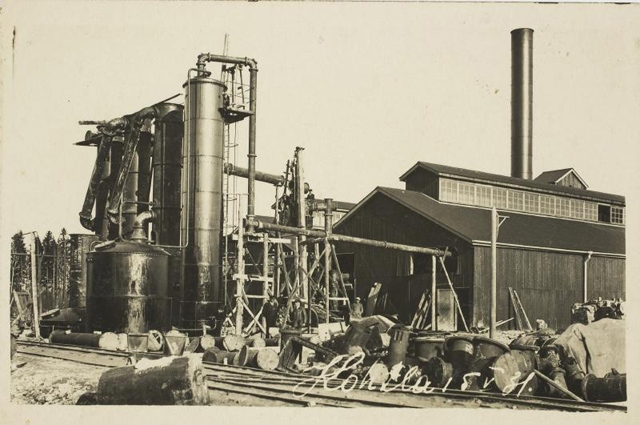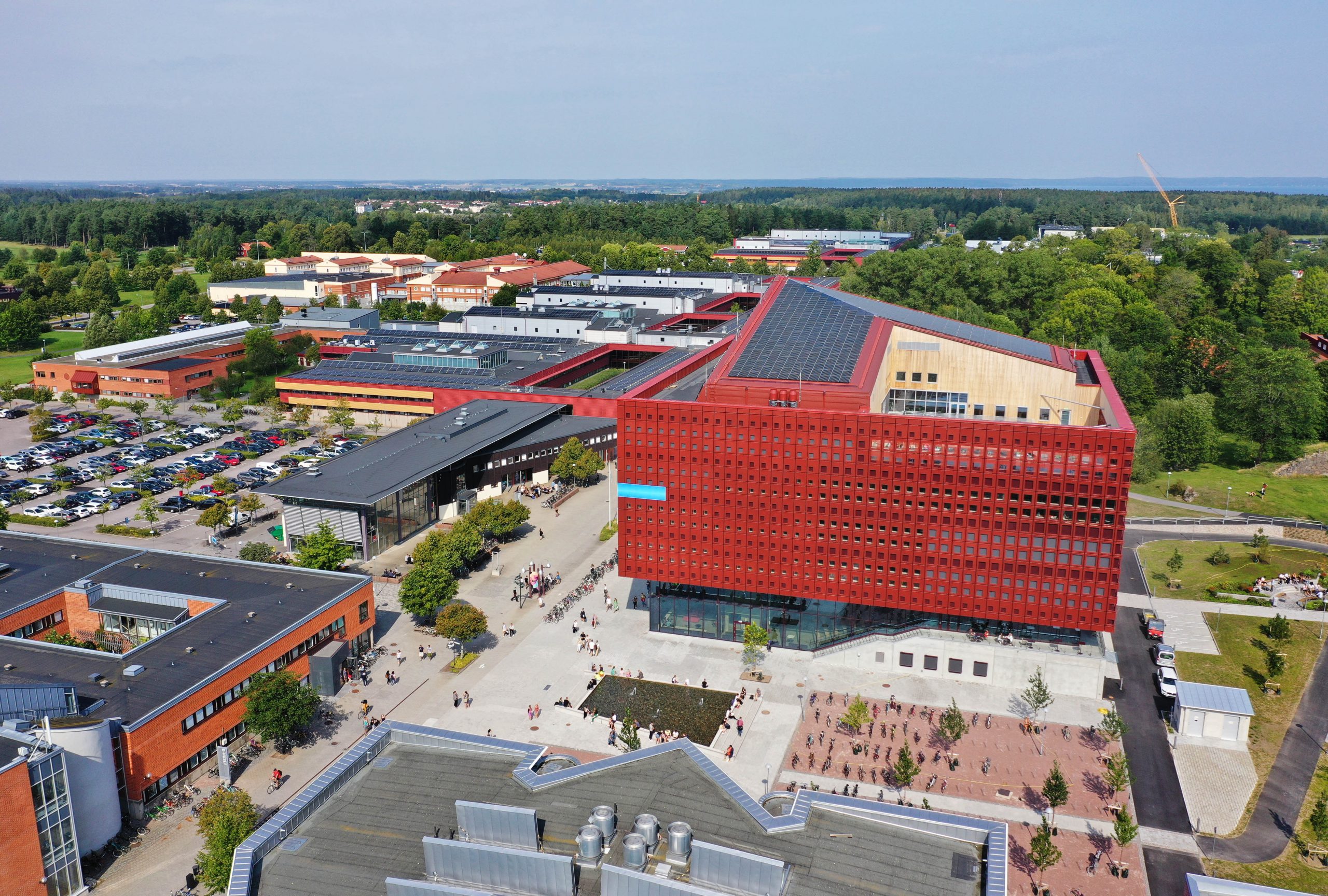|
New Consolidated Gold Fields
New Consolidated Gold Fields Ltd Estonian Branch (commonly known as Goldfields) was an oil shale company located in Kohtla-Nõmme, Estonia. It was a subsidiary of Consolidated Gold Fields. New Consolidated Gold Fields began oil shale research and development in the late 1920s in England. EPA (1979), p. C-10 In 1930 it began construction of the shale oil extraction complex at Kohtla-Nõmme. It consisted of a shale oil extraction plant, a crushing mill, laboratory, power plant, office building and services facilities, as also housing for 30 workers, dispensary and sauna. The first plant was built in 1931. The plant was equipped with eight rotating retorts (Davidson retorts). Each of these retorts was capable of processing 15 tonnes of oil shale per day. This facility continued to operate until 1961. Ots (2004), pp. 15–16 In 1934 the company doubled its production by building the second shale oil extraction plant. In 1934, '' Eesti Kiviõli'' and ''New Cons ... [...More Info...] [...Related Items...] OR: [Wikipedia] [Google] [Baidu] |
Oil And Gas Industry
The petroleum industry, also known as the oil industry or the oil patch, includes the global processes of exploration, extraction, refining, transportation (often by oil tankers and pipelines), and marketing of petroleum products. The largest volume products of the industry are fuel oil and gasoline (petrol). Petroleum is also the raw material for many chemical products, including pharmaceuticals, solvents, fertilizers, pesticides, synthetic fragrances, and plastics. The industry is usually divided into three major components: upstream, midstream, and downstream. Upstream regards exploration and extraction of crude oil, midstream encompasses transportation and storage of crude, and downstream concerns refining crude oil into various end products. Petroleum is vital to many industries, and is necessary for the maintenance of industrial civilization in its current configuration, making it a critical concern for many nations. Oil accounts for a large percentage of the wo ... [...More Info...] [...Related Items...] OR: [Wikipedia] [Google] [Baidu] |
Kohtla Parish
Kohtla Parish ( et, Kohtla vald) was an Estonian municipality located in Ida-Viru County. It has a population of 1640 (2014) and an area of 101 km². Villages Amula, Järve, Kaasikaia, Kaasikvälja, Kabelimetsa, Kohtla, Kukruse, Mõisamaa, Ontika, Paate, Peeri, Roodu, Saka The Saka ( Old Persian: ; Kharoṣṭhī: ; Ancient Egyptian: , ; , old , mod. , ), Shaka (Sanskrit ( Brāhmī): , , ; Sanskrit (Devanāgarī): , ), or Sacae (Ancient Greek: ; Latin: ) were a group of nomadic Iranian peoples who histo ..., Servaääre, Täkumetsa, Valaste, Vitsiku. References External links Official website Former municipalities of Estonia {{IdaViru-geo-stub ... [...More Info...] [...Related Items...] OR: [Wikipedia] [Google] [Baidu] |
1930 Establishments In Estonia
Year 193 ( CXCIII) was a common year starting on Monday (link will display the full calendar) of the Julian calendar. At the time, it was known as the Year of the Consulship of Sosius and Ericius (or, less frequently, year 946 '' Ab urbe condita''). The denomination 193 for this year has been used since the early medieval period, when the Anno Domini calendar era became the prevalent method in Europe for naming years. Events By place Roman Empire * January 1 – Year of the Five Emperors: The Roman Senate chooses Publius Helvius Pertinax, against his will, to succeed the late Commodus as Emperor. Pertinax is forced to reorganize the handling of finances, which were wrecked under Commodus, to reestablish discipline in the Roman army, and to suspend the food programs established by Trajan, provoking the ire of the Praetorian Guard. * March 28 – Pertinax is assassinated by members of the Praetorian Guard, who storm the imperial palace. The Empire is auctioned o ... [...More Info...] [...Related Items...] OR: [Wikipedia] [Google] [Baidu] |
Non-renewable Resource Companies Disestablished In 1940
A non-renewable resource (also called a finite resource) is a natural resource that cannot be readily replaced by natural means at a pace quick enough to keep up with consumption. An example is carbon-based fossil fuels. The original organic matter, with the aid of heat and pressure, becomes a fuel such as oil or gas. Earth minerals and metal ores, fossil fuels (coal, petroleum, natural gas) and groundwater in certain aquifers are all considered non-renewable resources, though individual elements are always conserved (except in nuclear reactions, nuclear decay or atmospheric escape). Conversely, resources such as timber (when harvested sustainably) and wind (used to power energy conversion systems) are considered renewable resources, largely because their localized replenishment can occur within time frames meaningful to humans as well. Earth minerals and metal ores Earth minerals and metal ores are examples of non-renewable resources. The metals themselves are present ... [...More Info...] [...Related Items...] OR: [Wikipedia] [Google] [Baidu] |
Non-renewable Resource Companies Established In 1930
A non-renewable resource (also called a finite resource) is a natural resource that cannot be readily replaced by natural means at a pace quick enough to keep up with consumption. An example is carbon-based fossil fuels. The original organic matter, with the aid of heat and pressure, becomes a fuel such as oil or gas. Earth minerals and metal ores, fossil fuels (coal, petroleum, natural gas) and groundwater in certain aquifers are all considered non-renewable resources, though individual elements are always conserved (except in nuclear reactions, nuclear decay or atmospheric escape). Conversely, resources such as timber (when harvested sustainably) and wind (used to power energy conversion systems) are considered renewable resources, largely because their localized replenishment can occur within time frames meaningful to humans as well. Earth minerals and metal ores Earth minerals and metal ores are examples of non-renewable resources. The metals themselves are present ... [...More Info...] [...Related Items...] OR: [Wikipedia] [Google] [Baidu] |
Synthetic Fuel Companies
Synthetic things are composed of multiple parts, often with the implication that they are artificial. In particular, 'synthetic' may refer to: Science * Synthetic chemical or compound, produced by the process of chemical synthesis * Synthetic organic compounds synthetic chemical compounds based on carbon (organic compounds). * Synthetic peptide * Synthetic biology * Synthetic elements, chemical elements that are not naturally found on Earth and therefore have to be created in experiments Industry * Synthetic fuel * Synthetic oil * Synthetic marijuana * Synthetic diamond * Synthetic fibers, cloth or other material made from other substances than natural (animal, plant) materials Other * Synthetic position, a concept in finance * Synthetic-aperture radar, a type or radar * Analytic–synthetic distinction, in philosophy * Synthetic language in linguistics, inflected or agglutinative languages * Synthetic intelligence a term emphasizing that true intelligence expressed by comp ... [...More Info...] [...Related Items...] OR: [Wikipedia] [Google] [Baidu] |
Ida-Viru County
Ida-Viru County ( et, Ida-Viru maakond or ''Ida-Virumaa'') is one of 15 counties of Estonia. It is the most north-eastern part of the country. The county contains large deposits of oil shale - the main mineral mined in Estonia. Oil shale is used in the production of shale oil and in thermal power plants. The capital of the county is the town of Jõhvi which is administratively united with the Jõhvi Parish; nevertheless, Narva is the largest town in the county in terms of population and at the same time the third largest city in Estonia after Tallinn and Tartu. In January 2019 Ida-Viru County had a population of 136,240 – constituting 10.3% of the total population in Estonia. It borders Lääne-Viru County in the west, Jõgeva County in the southwest and Russia (Leningrad Oblast) in the east. It is the only county in Estonia where Russians constitute the majority of population (73.1% in 2010), the second highest being Harju (28%). History During the latter part of the p ... [...More Info...] [...Related Items...] OR: [Wikipedia] [Google] [Baidu] |
Oil Shale Companies Of Estonia
An oil is any nonpolar chemical substance that is composed primarily of hydrocarbons and is hydrophobic (does not mix with water) & lipophilic (mixes with other oils). Oils are usually flammable and surface active. Most oils are unsaturated lipids that are liquid at room temperature. The general definition of oil includes classes of chemical compounds that may be otherwise unrelated in structure, properties, and uses. Oils may be animal, vegetable, or petrochemical in origin, and may be volatile or non-volatile. They are used for food (e.g., olive oil), fuel (e.g., heating oil), medical purposes (e.g., mineral oil), lubrication (e.g. motor oil), and the manufacture of many types of paints, plastics, and other materials. Specially prepared oils are used in some religious ceremonies and rituals as purifying agents. Etymology First attested in English 1176, the word ''oil'' comes from Old French ''oile'', from Latin ''oleum'', which in turn comes from the Greek (''elaio ... [...More Info...] [...Related Items...] OR: [Wikipedia] [Google] [Baidu] |
Eesti Energia
Eesti Energia AS is a public limited energy company in Estonia with its headquarters in Tallinn. It is the world's biggest oil shale to energy company. The company was founded in 1939. As of 2014, it operates in Estonia, Latvia, Lithuania, Finland, Jordan and Utah, United States. In Estonia, the company operates under the name Eesti Energia, while using the brand name Enefit for international operations. The main raw material for energy production – oil shale – is extracted from mines located in Eastern-Estonia and owned by the company. The group of Eesti Energia has three main operation areas: electricity generation, shale oil production, and sale and distribution of electricity. Its shares are owned by the Government of Estonia. History Eesti Energia was founded in 1939. In 1998, it was reorganized from the state enterprise to a private limited company. In 1998–1999, two distribution companies (''Läänemaa Eletrivõrk'' and ''Narva Elektrivõrk'') were separated f ... [...More Info...] [...Related Items...] OR: [Wikipedia] [Google] [Baidu] |
Linköping University
Linköping University (, LiU) is a public research university based in Linköping, Sweden. Originally established in 1969, it was granted full university status in 1975 and is one of Sweden's largest academic institutions. The university has four campuses across three cities: Campus Valla and Campus US in Linköping, Campus Norrköping in Norrköping and Campus Lidingö in Stockholm. It is organized into four faculties: Arts and Sciences, Medicine and Health Sciences, Educational Sciences, and the Institute of Technology. In order to facilitate interdisciplinary work, there are 12 large departments combining knowledge from several disciplines and often belonging under more than one faculty. Linköping University emphasises dialogue with the surrounding business sphere and the community at large, both in terms of research and education. In 2021 the university was home to 35,900 students and 4,300 employees. It is a member of the European Consortium of Innovative Universities, as w ... [...More Info...] [...Related Items...] OR: [Wikipedia] [Google] [Baidu] |
Oil Shale In Estonia
There are two kinds of oil shale in Estonia, both of which are sedimentary rocks laid down during the Ordovician geologic period. Graptolitic argillite is the larger oil shale resource, but, because its organic matter content is relatively low, it is not used industrially. The other is kukersite, which has been mined for more than a hundred years. Kukersite deposits in Estonia account for 1% of global oil shale deposits. Oil shale ( et, põlevkivi; literally: burning rock) has been defined as a strategic energy resource in Estonia and the oil shale industry in Estonia is one of the most developed in the world. IEA (2013), p. 20 Historically, most of mined oil shale was used for electricity generation. Of all the oil shale fired power stations in the world, the two largest are in Estonia. Although its share decreased in the decade to 2022, direct and indirect use of oil shale still generates about half of Estonia's electricity. About half of mined oil shale is used ... [...More Info...] [...Related Items...] OR: [Wikipedia] [Google] [Baidu] |





.png)



